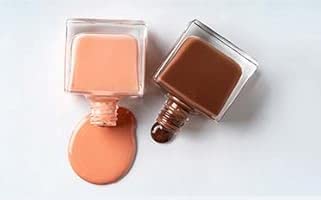Basic Info.Model NO.JSHRAfter-sales ServiceSupport on-Site
ServiceWarrantySupportTypeInduction Heating MachineCertificationCE,
ISOStructureHorizontal TypeBrandLianshengFeedwater Flow
Rate32(Th)Angle Hole Diameter (mm)φ32Ripple Depth (mm)2.5Corner
Hole Centre Distance(mm)480*61TrademarklianshengTransport
PackageSea FreightSpecificationJSHROriginChinaHS
Code8419500090Product DescriptionPlate heat exchangers for
air-cooled chillers for evaporators Product DescriptionI.
summary Plate heat exchanger is an efficient heat exchanger
which is composed of a series of corrugated metal sheets. Thin
rectangular channels are formed between various plates, and heat
exchange is carried out through the plates. Plate heat exchanger is
an ideal equipment for liquid-liquid and liquid-vapor heat
exchange. It has the characteristics of high heat exchange
efficiency, small heat loss, compact and light structure, small
floor space, wide application and long service life. Under the same
pressure loss, its heat transfer coefficient is 3-5 times higher
than that of tube heat exchanger, Covering an area of one third of
that of the tubular heat exchanger. and the heat recovery rate
can be as high as 90%.II.Classification according to
structure 1.Removable plate heat exchanger (also called plate
heat exchanger with sealing gasket) 2.welding plate heat
exchanger, 3. spiral plate heat exchanger,
4.Plate-coil heat exchanger (also called honeycomb heat
exchanger).III. design feature 1.High efficiency and energy
saving: its heat transfer coefficient is 3000 ~ 4500 kcal/m2 c h,
which is 3~5 times higher than that of shell-and-tube heat
exchanger. 2.Compact structure: the plates of the plate heat
exchanger are closely arranged. Compared with other types of heat
exchangers, the plate heat exchanger occupies less area and space,
and the size of plate heat exchanger with the same area and heat
exchange capacity is only 1/5 of that of shell-and-tube heat
exchanger.. 3.Easy cleaning and convenient disassembly: the plate
heat exchanger clamps the clamped plate by clamping bolts, so it is
convenient to disassemble and open for cleaning at any time. At the
same time, due to the smooth surface and high turbulence, it is not
easy to scale. 4.Long service life: the plate heat exchanger is
made of stainless steel or titanium alloy plates, which can resist
all kinds of corrosive media, and the rubber gasket can be replaced
at will, and it is convenient for disassembly and
maintenance. 5.Strong adaptability: the plates of the plate
heat exchanger are independent components, and the flow can be
increased or decreased freely as required, with various forms,
it can be suitable for various different technological
requirements. 6.There is no cross flow of liquid, and the
sealing groove of the plate heat exchanger is provided with a
liquid drain channel, so that all kinds of media will not collude,
and even if there is leakage, the media will always be discharged
outward.IV. application area Plate heat exchangers have
been widely used in metallurgy, mining, petroleum, chemical
industry, electric power, medicine, food, chemical fiber,
papermaking, textile, shipping, heating and other departments, and
can be used for heating, cooling, evaporation, condensation,
sterilization, waste heat recovery etc.V.Key points of product
selection 1.The control parameters of plate heat exchanger
are heat exchanger material, working pressure, design temperature,
etc. 2. When selecting a heat exchanger, we should try our
best to make the side with small heat transfer coefficient get
large flow velocity, and try our best to make the heat transfer
coefficients on both sides of the two fluid heat exchange surfaces
equal or similar to improve the heat transfer coefficient. The
temperature of the fluid heated by the heat exchanger should be
10ºC lower than the saturation temperature at the outlet pressure
of the heat exchanger and lower than the working temperature of the
water pump used for secondary water. 3.Fluid containing silt and
dirt should be filtered and then enter the heat exchanger.
4.When selecting plate heat exchanger, the flow velocity at the
interface of fluid on the side with small temperature difference
should not be too large, and it should meet the requirements of
pressure drop. 5.For the case of large flow and small
allowable pressure drop, the plate with small resistance should be
selected, otherwise, the plate with large resistance should be
selected. 6.According to the fluid pressure and temperature,
choose detachable or electric welding. 7. It is not
advisable to choose plates with too small veneer area, so as to
avoid too many plates, too small flow rate between plates and
reduce the heat transfer coefficient. 8.The heat transfer
medium of plate heat exchanger should not be steam.Detailed
Photos Product ParametersPlate heat exchanger product
selection parameters tableModels Angle holeDiameter
(mm)"Ripple depth(mm)""Corner hole centre distanc
Related products about Plate Heat Exchangers for Air-Cooled Chillers for Evaporators
-
 Waste Tyre Plastic Recycling Machinery Machine Tire Crusher Production Line Rubber Crumb Grinding Machine Equipment Tire Shredder
Waste Tyre Plastic Recycling Machinery Machine Tire Crusher Production Line Rubber Crumb Grinding Machine Equipment Tire Shredder
-
 Stretch Plastic Blowing Pet Bottle Making Blow Molding Machine Bottles Stretch Automatic Pet Bottle Blowing Machine
Stretch Plastic Blowing Pet Bottle Making Blow Molding Machine Bottles Stretch Automatic Pet Bottle Blowing Machine
-
 Waste Plastic Pet Bottle, Water Bottle Flake, PP/HDPE/LDPE PE Film Jumbo Woven Bags Plastic Crusher Machine, Plastic Crushing Washing Recycling Machine
Waste Plastic Pet Bottle, Water Bottle Flake, PP/HDPE/LDPE PE Film Jumbo Woven Bags Plastic Crusher Machine, Plastic Crushing Washing Recycling Machine
-
 Type 2 Wall-Mounted Electric Car Charging Station 7kw /11 Kwelectric Vehicle Charging Station Home Wallbox AC EV Charger Single Phase or 3three Phase
Type 2 Wall-Mounted Electric Car Charging Station 7kw /11 Kwelectric Vehicle Charging Station Home Wallbox AC EV Charger Single Phase or 3three Phase
-
 G-View G12W Wholesale Auto Car LED Headlight Bulb High Power H13 H11 9005 H7 H4 Car LED Headlights LED Car Lights
G-View G12W Wholesale Auto Car LED Headlight Bulb High Power H13 H11 9005 H7 H4 Car LED Headlights LED Car Lights
-
 New Design Porcelain Round Plates Dinner Set for Wedding and Banquet
New Design Porcelain Round Plates Dinner Set for Wedding and Banquet
-
 China 2023 New Design Super Soft 100% Polyester Microfiber Knitted Oversized Decoration Hoodie Blanket
China 2023 New Design Super Soft 100% Polyester Microfiber Knitted Oversized Decoration Hoodie Blanket
-
 Handmade Art Creative Materials Thickened White Paper Cup DIY Disposable Handmade Colored Paper Cup
Handmade Art Creative Materials Thickened White Paper Cup DIY Disposable Handmade Colored Paper Cup






